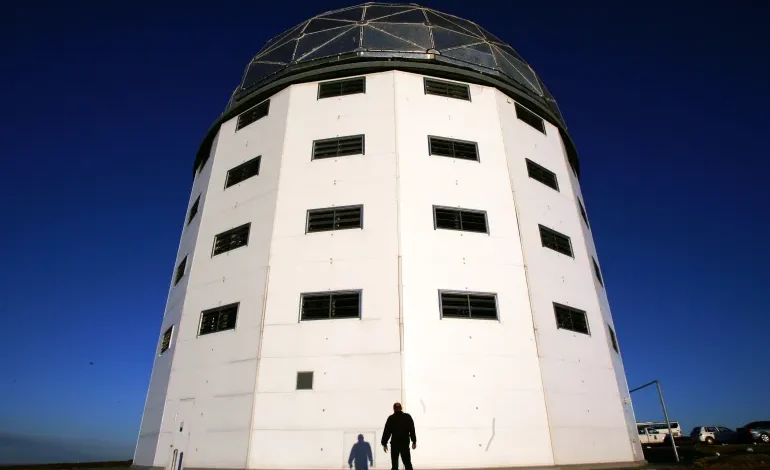Earth to get a mini-moon for two months, but what is it?

From late September until late November this year, a “mini-moon”, called 2024 PT5 by the astrologers who spotted it approaching will be orbiting the planet. Although this mini-moon cannot be seen by the naked eye – it is just 10 metres (33ft) in diameter – it can be viewed through a high-powered telescope.
Mini-moons are asteroids which have been pulled by the Earth’s gravity into orbit around the planet and remain there until they become dislodged and move away again. The length of time these mini-moons remain in orbit depends on the speed and trajectory with which they approach the Earth.
Most mini-moons that enter Earth’s orbit are hard to see because they are too small and not bright enough to be seen against the backdrop of the darkness of space.
What, exactly, is a mini-moon?
Mini-moons are extremely rare. Asteroids are usually pulled into Earth’s orbit by the gravity of the planet as rarely as once in 10 to 20 years, but a few more have appeared in recent years. They can remain in the exosphere, which is roughly 10,000km (6,200 miles) above the surface of the Earth.
On average, mini-moons remain in Earth’s orbit for anything from a few months to two years with the asteroid eventually breaking away from Earth’s gravitational pull, then moving back into space to resume a trajectory away from the planet.
Similar to other rocky bodies in space, mini-moons can be composed of a mixture of metallic substances, carbon, clay and silicate material.
According to a 2018 mini-moons study published in the Swiss journal, Frontiers in Astronomy and Space Sciences, most mini-moons come towards Earth from the asteroid belt between Mars and Jupiter.
Unlike Earth’s permanent moon, mini-moons do not have stable orbits. Instead, they embark on a “horseshoe” orbit path as a result of the asteroids being constantly pulled forwards and backwards by the gravity of Earth.
This orbital instability allows the asteroids to gradually move farther away from Earth’s gravitational pull. Once the mini-moon has escaped Earth’s gravitational pull, it is released back into space.
Although mini-moons are usually rare, several have been identified within Earth’s orbit since 2006.
In that year, 2006 RH120, the Earth’s first confirmed mini-moon with a diameter of about 2 to 4 metres was captured in Earth’s orbit for roughly a year. This was the only mini-moon to have been photographed. The Southern African Large Telescope (SALT) was used to capture the image of it. It was spotted by the Catalina Sky Survey (CSS) which was established by NASA using telescopes near Tucson, Arizona in 1998 to search for “near-Earth objects”.
The 2022 NX1 mini-moon, with a diameter of somewhere between 5 and 15 metres was first seen in 1981, then again in 2022.
It is expected to return to Earth’s orbit to take up a horseshoe orbital path again in 2051.
What do we know about the latest mini-moon?
The asteroid currently approaching the planet is known as 2024 PT5. It was first spotted on August 7 using the NASA-funded Asteroid Terrestrial-impact Last Alert System (ATLAS) located at the Haleakala Observatory on the island of Maui, Hawaii.
The system continuously scans the sky while identifying and tracking near-Earth objects that might either pose a threat to the Earth or provide an opportunity to gather significant scientific knowledge.
“Every time an object with an orbit so Earthlike is discovered, there is a chance that we are just recovering space debris,” said Raul de la Fuente Marcos, an astronomer at the Complutense University of Madrid and a co-author of the study.
However, astronomers from the study have now confirmed that 2024 PT5 is an asteroid.
Astronomers have determined that the mini-moon will complete a trajectory around the Earth from September 29 to November 25, before ultimately breaking free from Earth’s gravitational pull before heading into space.
Are there other types of moon?
Apart from our permanent moon, which can appear in different forms depending on conditions, there are some other types of “moon”.
Ghost moons
Also known as Kordylewski clouds, ghost moons are concentrations of dust that are typically found in the Lagrangian points in the Earth-moon system.
These Lagrangian points, sometimes known as gravitational “sweet spots”, are where the gravitational forces of the Earth and the moon meet, allowing the ghost moon to maintain a stable position.
These clouds can measure as much as 100,000km across and were first discovered by Polish astronomer Kazimierz Kordylewski in the 1960s using a technique called polarimetry, measuring the direction of how light waves vibrate. These dust clouds were later confirmed in 2018 by the Royal Astronomical Society.










